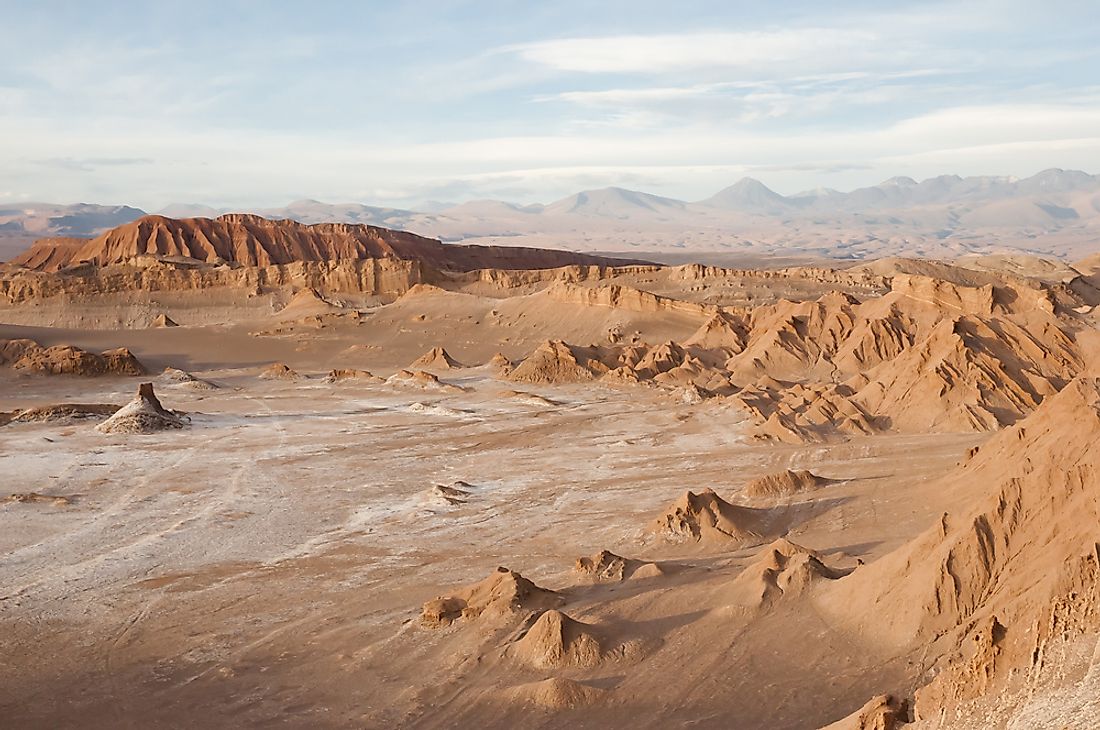The Driest Place On Earth

The world is home to many large deserts, with some of them receiving less than 200 mm of precipitation every year. The driest place on earth is the Atacama Desert in Chile. It is a plateau that occupies a 600 mile strip of the Pacific coast on the western side of Andes Mountains. It is the only true desert on Earth that receives lower moisture than all the polar deserts. It occupies an area of about 41,000 square miles and is mainly made up of sand, salt lakes, and rough terrain. The lack of precipitation in the desert is because of the two mountains (the Chilean coast range and Andes Mountains) that block the advection of moisture from the Atlantic and Pacific oceans, creating a 2-sided rain-shadow.
Climate
Although the lack of moisture is the main feature of this desert, there are a few instances when it has received some precipitations. The Antarctic front reached the desert in July 2011 and brought 31 inches of snow which affected many residents, especially in Bolivia. The San Pedro de Atacama was flooded by the Altiplano winter in 2012. The southern region of the desert was affected by heavy rainfall on March 25, 2015.
Aridity
The desert is the driest non-polar area on earth, particularly the regions surrounding Yungay town (deserted area), Chile are extremely dry. The typical rain received annually in the Atacama Desert is 0.6 inches, although numerous places like Iquique and Arica experience between 0.04 inches to 0.12 inches. Various weather stations are yet to receive rainfall while other sites in the central part of the desert have registered durations of 4 years without rain. Evidence confirms that this place might not have received significant rain for over four centuries.
The Atacama is the oldest continuously dry place in the world which has experienced extreme aridity for over three million years. The desert is too arid that all the surrounding high mountains surrounding it are glacier free. Llullaillaco, Monte Pissis, and Ojos del Salado are the only mountains with permanent snow on their peaks. Research conducted by British scientists suggest that some of the rivers in the Atacama have been dry for over 120,000 years. Other locations may see marine fogs which provide enough precipitation for lichens and algae to grow.
Flora And Fauna
Despite the climatic conditions in the desert, over five hundred plant species thrive on the border of the desert. Some of the species include salt grass, Ilareta, thyme, and in regions with sufficient humidity, trees like leafy Algarrobo, Pimiento tree, and Chanar thrive can be found. The Atacama is home to various cacti species including Cardon and Candelabro which attain a diameter of about 28 inches and height of 23 feet.
The desert climate prevents many animals from thriving, and some regions of Atacama are too arid for any animal or plant to survive. During the humid and warm seasons, desert butterflies and wasps can be found on the hills. Some of the animals living in the desert include Atacama toads, lava lizards, iguanas, and salt lizards. The largest group of animals living in the desert is the birds. Humboldt penguins reside in the coastal area and nest on the cliffs overlooking the ocean. Other birds include Chilean woodstar, sparrows, and hummingbirds. Viscacha and the South-American gray fox, Darwin's leaf-eared mouse, and vicunas and guanacos also inhabit some parts of the desert.











